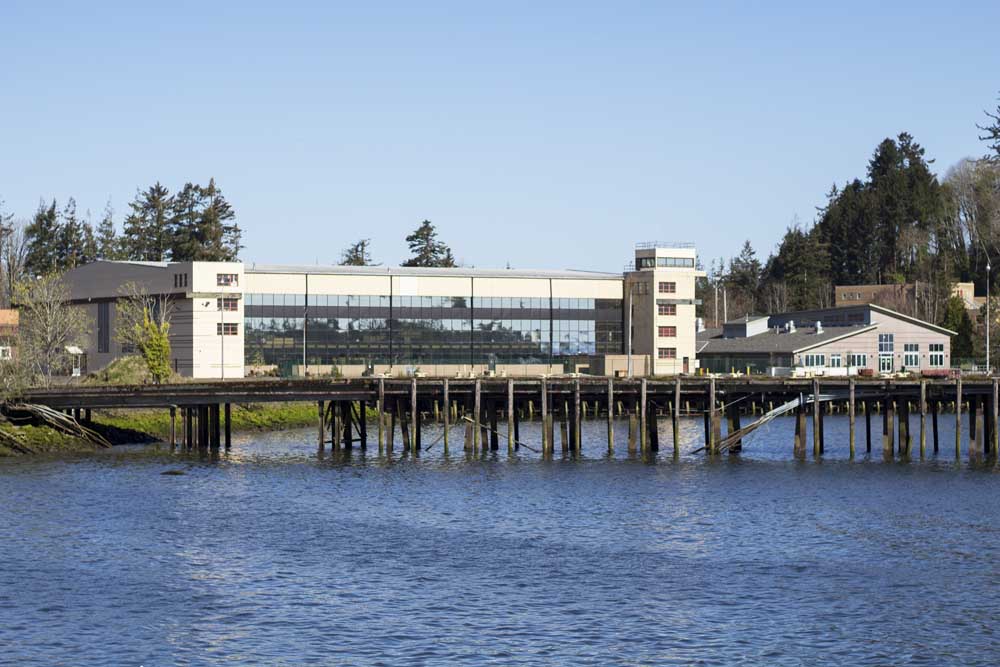Gearhart landowners, city, divided on pipe repair that could cost $1M
Published 1:29 pm Monday, May 12, 2025


Three Gearhart residents are unsure of how to protect their properties in the face of recent flooding and a sinkhole apparently caused by a broken pipe that runs under their land.
The pipe was installed long before the surrounding land was annexed by the city, and the responsibility of replacing the pipe — which could cost over a million dollars, has been the subject of contention.
In 2019, Julie Hamilton discovered a sinkhole in her front yard, a year after moving onto the property on Gearhart Loop Road. When she was selling railroad ties from her front yard, a buyer fell into the hole. Unharmed but angry, the buyer approached Hamilton about the issue.
“That was the first I had heard anything about a hole on my property,” she said. “That was a Friday night, and on Monday morning, I spoke with the city … and they told me that it wasn’t theirs, it was the county’s, and that I had to call the county because it was the county’s pipe.
“And so I called the county, and they said ‘No, absolutely not, no more of this.’ They’d obviously heard that before, and they said the land was annexed to the city years ago. So I started back with the city again.”
City Administrator Chad Sweet said that because the properties had not been annexed into Gearhart until 2002, any permits related to the pipe would have gone through county planning.
“County planning doesn’t have any records, so the pipe was either unpermitted or the records were lost … based on the type of pipe, it was likely installed in the 1950s or 1960s though there’s a complete lack of documentation,” he said in an email to The Astorian.
After learning that ownership of the pipe was unknown, Sweet said the city hired remote camera operators to inspect the pipe, which revealed areas of failure, including separation and offset joints.
Upon consulting contractors to evaluate potential repairs, the city found that full replacement was the only option. Due to the depth of the system and the need to cross private property, estimates for the replacement ranged from $700,000 to more than $1 million.
“During our due diligence, our insurer CIS determined that the pipe had not been transferred to or accepted by the City, and thus didn’t fall within our coverage,” Sweet said. “Our City Attorney worked with CIS to understand the legal risks. The City cannot afford to establish the precedent of accepting failing non-public infrastructure.
“We’ve engaged Regional Solutions, ODOT, and Oregon Emergency Management (OEM) in an effort to identify funding or interagency solutions. OEM has informed us that current funding opportunities are extremely limited and potentially at risk due to budget constraints.”
Hamilton said she had experienced frustrations in trying to work with the city on the issue. She was told any repairs would have to be put on hold until summer, when water wasn’t running through the pipe. The city initially filled the hole with gravel, and Hamilton said she was told it would likely be safe to continue planting her garden.
“And I went out when I was watering one evening, and my right leg went down to my hip,” she said. “And I clambered out of it and went back and looked, and the hole had expanded from 3 feet in diameter to about 7, 8 feet in diameter.”
After attempting to contact the city several times, Hamilton filed a lawsuit. But she said the suit went on for years, and that trial dates were rescheduled numerous times.
In 2024, Hamilton agreed to dismiss the lawsuit after she said her attorney was told by the city’s insurance attorney that even if she were to win in court, the city would appeal.
“I was the one who dismissed it because of my exhaustion and money and time involved with it all, and it had absolutely nothing to do with anybody on my team agreeing with them (the city) that they didn’t have responsibility,” she said.
Last month, Hamilton arranged to meet — sans attorneys — with Sweet about the issue to see what other properties were being impacted. In that meeting, she said Sweet told her that Bud’s RV Park and Campground, down the street along U.S. Highway 101, had been flooding.
Owned by Adam and Mechel Dean, Bud’s RV Park and Campground sits directly in front of the Neacoxie Creek. It has experienced mild flooding from the creek in the past, Adam Dean said, but this year was much worse than usual.
“(The pipe) is like 30 feet underneath, because the Neacoxie is about 8 feet lower than where we’re at now,” Dean said. “And so whenever they put the pipe in, they determined, well, it’s going to flow better if we put this pipe there, because if it’s lower it’s going to drain better.
“At some point it broke, probably, like right under (Julie’s) yard, and so the water is now intermingling with the sand that’s underneath her yard. And so as it flows through, it’s taking some of that sand with it, and that’s what’s causing it in my opinion. And I mean, that’s logic, yeah, to say that that’s what’s causing the sinkhole.”
Some relief was given when the city cut a ditch downstream on Gearhart Loop Road to drain some of the water, but it wasn’t a permanent fix. Currently, the ditch, packed with sand, stands full of stagnant water.
During spring break for Oregon, Washington and Idaho schools, Dean said five RV campsites were flooded on the property. He and his wife had to refund a handful of campers, and couldn’t book any of the flooded sites.
Some land on the west side of the campground is still partially flooded, with muddy water creeping in from the creek.
While summer weather keeps away the persistent coastal rain, Dean worries about what will happen as colder, wetter months approach. If nothing is done about the impacted pipe by September, he will start having to invest in shielding his property from the flooding, an expensive endeavor in itself.
Dean also anticipates that if flooding worsens, other properties downstream to the south of his — such as the Great Wall restaurant, Grandma’s Corner restaurant, the Gearhart Liquor store, and the U-Haul facility — could also be affected.
“The city doesn’t have the money, which I understand; it’s a small city,” he said. “They don’t have a big lump sum to fork out to, you know, fix the pipe. But I see it as part of the city’s infrastructure, and I feel like they’re responsible for it. And it has gotten worse this year than it has been in previous years.”
Sweet said that the city is willing to form a Local Improvement District, so the impacted owners could pay for a solution over time, but that it cannot happen without the participation and approval of the surrounding property owners. And currently, the only two properties immediately affected are Hamilton’s and Bud’s RV Park & Campground.
“Julie doesn’t have that kind of money,” Dean said. “I don’t have that kind of money … Even if you split it between four businesses, that’s still $250,000, and we’re small businesses, with the exception of U-Haul.
“So we’ve got to figure out something else. And that’s where I’m hoping that, you know, reaching out to the state representative, that maybe they could find some money at the state level.”
Dean wrote to Rep. Cyrus Javadi, R-Tillamook, about the impacted pipe, asking for potential sources of funding. Javadi told The Astorian that he had recently reached out to Business Oregon and Oregon Emergency Management to seek grant dollars.
“What we’re pursuing is some state grant dollars,” he said. “At this point, it’s too late to put in any type of capital construction requests, and even if we could do that, it’s still unclear if this would be a public problem or private.
“If the state comes back empty handed, then we’re going to have to put our heads together … and figure out what’s going to be done to fix the problem.”







